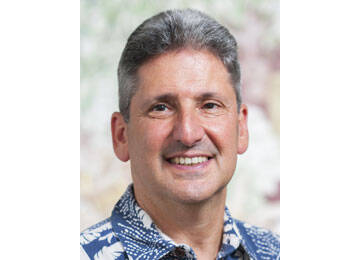The University of Hawaii has provided guidance for preserving a Native Hawaiian burial site in Puna near UH land after multiple incidents in which the graves were desecrated.
At Thursday’s meeting of the UH Board of Regents, UH President David Lassner said an incident in 1999 in which tourists stole iwi kupuna — Hawaiian ancestral remains — from a traditional burial site on Cape Kumukahi, as well as a similar incident in 2020, did not take place on UH land, contrary to what was previously believed.
According to news coverage regarding the 1999 incident, three female visitors from the mainland removed a 10-inch bone and part of a jawbone — including teeth — from a burial site and gave them to Keaau police, evidently not realizing that the bone fragments were ancestral remains.
The visitors were not charged and were allowed to return to the mainland, but the incident raised questions about how the land was managed and how a rising number of tourists in the area — where Hawaiian cultural sites are abundant — also was increasing incidents of grave desecration.
The issue resurfaced in 2020, when a similar incident occurred, raising again the issue of land management.
Both incidents were thought to have taken place on a 58-acre parcel of conservation land owned by UH at the end of the Kapoho Kumukahi Lighthouse Road.
“It’s been a couple of years since (the Office of Hawaiian Affairs) notified me of their concerns alleging desecration of graves over 20 years ago,” Lassner said. “Clearly, this was a major concern to us. We … had the property thoroughly surveyed.
“And it turned out that the desecration that had taken place 20 years ago was not on UH property at all, but on an adjoining piece of property very close to our land boundary,” Lassner said.
Despite that revelation, Lassner said that UH worked with the neighboring landowner to help manage the burial sites, and has developed a burial treatment plan for other gravesites that were confirmed to exist on the UH parcel.
State Department of Land and Naturals Resources burial site specialist Jordan Calpito said burial treatment plans outline preservation measures for burial sites while permitting descendents of those interred to still access the sites.
“UH’s particular plan, they’ve requested that the remains be preserved in place,” Calpito said.
Lassner said burial treatment plans typically are only prepared in advance of some form of development or project that could potentially disturb a gravesite, but he explained that in this case, the plan was simply “the right thing to do.”
On Tuesday, a UH spokesman clarified that the university has no planned projects for the area. During Thursday’s meeting, Lassner said he was actually unaware that the university even owned the land at all until the desecration incidents were brought to his attention.
The Hawaii Island Burial Council approved a draft of the burial treatment plan Thursday, as did lineal descendants of those interred at the gravesites in question, Lassner said.
“(The descendants) felt good about our commitment and where we were headed,” Lassner said. “For them, this had been an open wound of more than 20 years since the desecration of their ancestors. And the iwi are still sitting in (DLNR’s possession), because there hasn’t been a plan on how to re-inter them.”
Calpito said the DLNR’s State Historical Preservation Division should approve the treatment plan before the end of the week.
Email Michael Brestovansky at mbrestovansky@hawaiitribune-herald.com.






